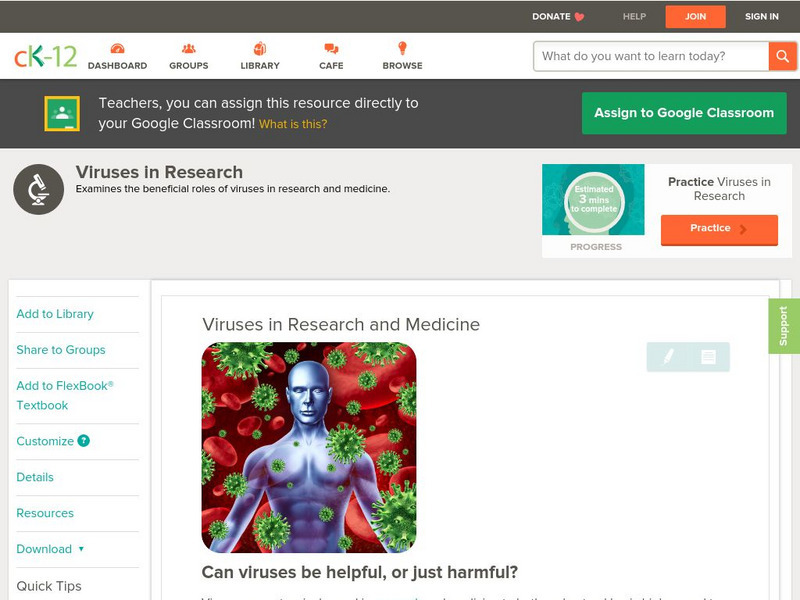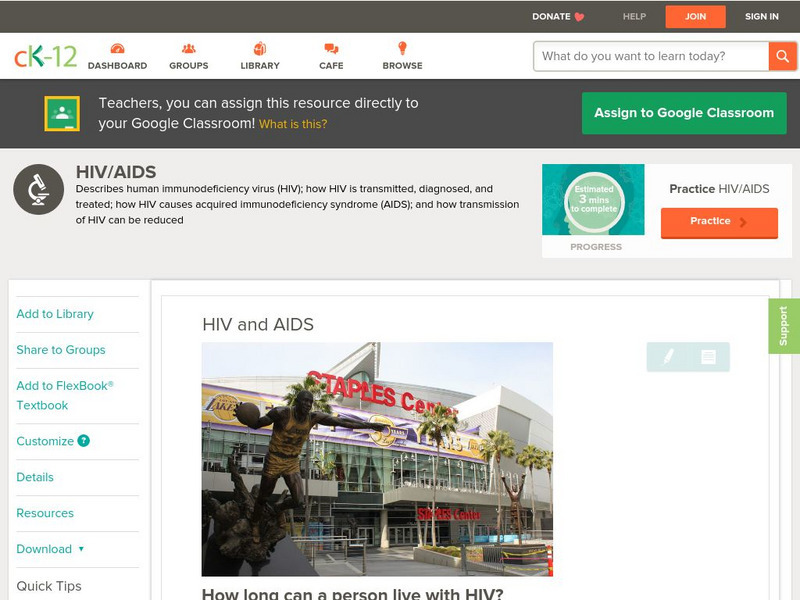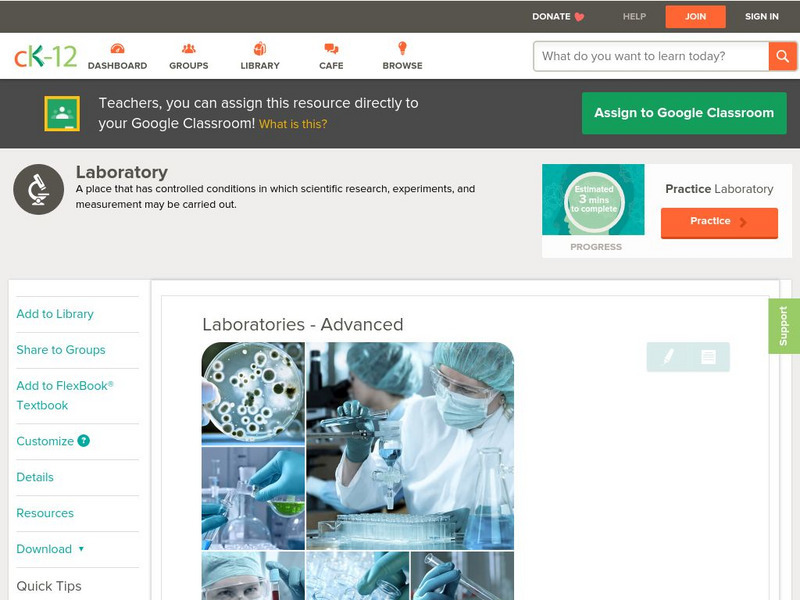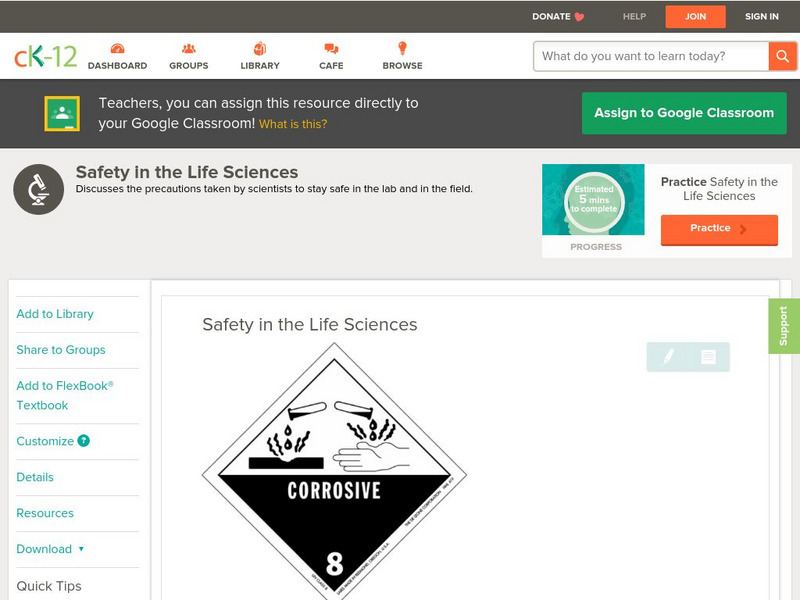Curated OER
Protein Assays: Bio Rad and Page Gels
Students conduct the Biuret Test and the Bio Rad Protein Assay. They examine the spectrophotometer and graph molecular weights and the concentrations of the proteins investigated. They prepare solutions for the Bio-Rad test and use the...
Curated OER
The Beaks of the Finches
Young scholars become birds and are given "beak-types". After completing the simulation, students relate results to adaptations and natural selection. Extensions of the simulation allow for comparative results and include population...
Curated OER
Monitoring Estuarine Water Quality
Middle schoolers analyze water quality data from real data. In this environmental science lesson, students examine how salinity and dissolved oxygen affect the living organisms in the estuary. They interpret graphs to support or disprove...
Curated OER
Kinesin and Exocytosis
Learners design a visualization to illustrate the role of the protein kinesin in exocytosis of a secretory material in a directed manner.
Curated OER
Building A Topographic Model
Students visualize, in three dimensions, features represented by contour lines on a topographic map. They see that the different elevations shown on a two dimensional topographic map can be used to build a 3-D model.
Curated OER
EVOLUTION OF BIOTECHNOLOGY
Students create a project using a provided "Evolution of Biotechnology Timeline". Students may pick from many different ideas in order to find a project that interests them. They examine how the use of biotechnology has increased with...
Curated OER
The Human Mind
Students read and discuss twin studies to explore the debate of nature vs. nurture. They create a list of characteristics and then look for evidence of whether it is primarily a genetic or environmental characteristic. All of the...
Curated OER
Epidemiology: Graphing and Analyzing Health Data
Students graph data on fetal and infant mortality rates collected by the Centers for Disease Control and Prevention. They identify trends in the data and propose potential causes for the trends.
Curated OER
Dino Hunt
Learners use the Internet to gather information about dinosaurs. They practice navagating through the different websites. They also practice listening to directions and also explore how to fill out a KWL chart.
Curated OER
Primary And Secondary Succession
Students cover the topics of primary and secondary succession with interest to its ties in the study of ecosystems. They study how the introduction of an insect can effect the ecological balance. Students make predictions and write them...
Curated OER
Mighty Macroinvertebrates
Seventh graders identify the names and features of macroinvertebrates found in Turtle River. In this ecology lesson students use digital microscopes and take pictures of invertebrates.
Curated OER
Pieces of Mind: Remembering What Matters
Students watch the program "Pieces of Mind" from PBS and participate in a class discussion about PET scans and their advantages. Students then brainstorm activities a PET scan could be used for.
Curated OER
the Wonder of Wetlands
Students explore the importance of the wetland ecosystem, its properties and functions, as well as, the many birds, animals, and plant life found there.
Curated OER
In the Scheme of Things
Fifth graders examine the food webs of different animals. They discuss the characteristics of those animals as well. They work together to develop their own definition for the word niche.
Curated OER
Field Experiments on Succession
Student develop a hypothesis regarding the effects of either mowing or fertilizer upon the diversity of plant species in a grassland ecosystem. They set up experiment field plots and measure species richness.
Curated OER
Yeast Cells and Their Environment
Students create their own experiment in which they have yeast cells growing in liquid environments. They examine the relationship between humans and microorganisms. They also practice using the scientific method.
Curated OER
Plant Motion: The Untold Secrets
Young scholars identify and categorize knowledge needed to design an experiment. They observe, recognize and describe the motion viewed. They document any changes caused by various solutions.
Curated OER
Bioethics: Debates in the Science Classroom
Students defend one side of a genetics ethics argument. They pull together a portfolio of human genetics and decision making skills. Students are allowed to prove what he/she has learned and express a personal opinion. They also are...
CK-12 Foundation
Ck 12: Episd: Viruses in Research and Medicine
[Free Registration/Login may be required to access all resource tools.] Is it possible for viruses to be useful? Explore and understand the why good things can happen when scientists study these pesky microorganisms.
CK-12 Foundation
Ck 12: Biology: Viruses in Research and Medicine
[Free Registration/Login may be required to access all resource tools.] An overview of using viruses in research and medicine.
CK-12 Foundation
Ck 12: Biology: Hiv and Aids
[Free Registration/Login may be required to access all resource tools.] Discusses how HIV is transmitted and how it causes AIDS.
Exploratorium
Exploratorium: From Jungle to Lab: The Study of Life's Complexity
An exhibit on what field biologists do. Hear from scientists who have worked in Belize about the reasons that they chose their career paths, the ideas that drive them in their research, the investigative tools they use, and about the...
CK-12 Foundation
Ck 12: Laboratories Laboratories Advanced
[Free Registration/Login may be required to access all resource tools.] An overview of science laboratory procedures including information about lab equipment, lab safety, and general techniques. After the reading, watch a short video...
CK-12 Foundation
Ck 12: Life Science: Safety in the Life Sciences
[Free Registration/Login may be required to access all resource tools.] There can be some very serious safety risks in scientific research. Safety practices must be followed when working with the hazardous materials and organisms. Learn...























